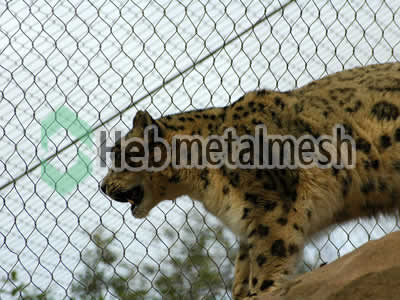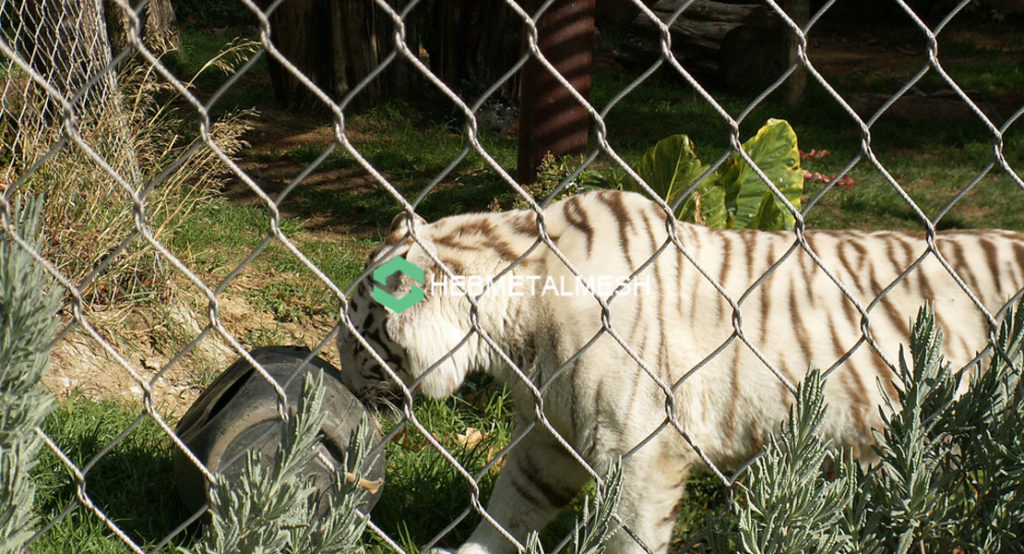As an animal enclosure designer, I know that choosing the right zoo animal mesh is crucial for the safety and wellbeing of the animals. In this comprehensive guide, I will cover everything you need to know about selecting the right zoo animal mesh for your animal enclosures. I will discuss the importance of choosing the right mesh, the types of zoo animal netting available, factors to consider when selecting zoo animal mesh, popular products, cost considerations, installation and maintenance, safety considerations, and case studies of successful zoo animal netting installations.

Introduction to Zoo Animal Mesh
Zoo animal mesh is a type of fencing designed specifically for animal enclosures. It is made from high tensile stainless steel wire that is woven into a mesh pattern. The mesh is designed to be flexible yet strong, and it is able to withstand the weight and force of large animals. It is also designed to be transparent, allowing visitors to see the animals without obstructing their view.
Importance of Choosing the Right Mesh for Animal Enclosures
Choosing the right zoo animal mesh is crucial for the safety and wellbeing of the animals. The mesh must be strong enough to withstand the weight and force of the animals, yet flexible enough to prevent injuries. It must also be transparent enough to allow visitors to see the animals, yet strong enough to prevent animals from escaping. In addition, the mesh must be able to withstand the elements and resist corrosion, as animal enclosures are often exposed to harsh weather conditions.
Choosing the wrong zoo animal netting can have serious consequences. If the mesh is too weak, animals may be able to escape, leading to injury or death. If the mesh is too rigid, animals may injure themselves when they come into contact with it. If the mesh is not transparent enough, visitors may not be able to see the animals clearly, which can lead to frustration and disappointment.
Types of Zoo Animal Mesh
There are several types of zoo animal mesh available, each with its own unique features and benefits. The most common types of zoo animal netting include:
Welded Wire Mesh
Welded wire mesh is made by welding together individual wires to form a grid pattern. It is strong and durable, making it suitable for larger animals, but it is not as flexible as other types of zoo animal netting.
Woven Wire Mesh
Woven wire mesh is made by weaving together individual wires to form a mesh pattern. It is more flexible than welded wire mesh, making it suitable for smaller animals, but it may not be as strong as other types of zoo animal mesh.
Chain Link Mesh
Chain link mesh is made by weaving together metal links to form a mesh pattern. It is strong and durable, making it suitable for larger animals, but it may not be as flexible as other types of zoo animal netting.
Stainless Steel Mesh
Stainless steel mesh is made from high tensile stainless steel wire that is woven into a mesh pattern. It is strong, flexible, and resistant to corrosion, making it suitable for a wide range of animals.
Factors to Consider When Choosing Zoo Animal Mesh
When selecting zoo animal mesh, there are several factors to consider, including the animal species, enclosure size, durability, and maintenance.
Animal Species
The first factor to consider when selecting zoo animal netting is the animal species. Different animals have different needs and behaviors, and the mesh must be able to accommodate these needs. For example, larger animals require stronger and more durable mesh, while smaller animals may require more flexible mesh.
Enclosure Size
The size of the animal enclosure is also an important factor to consider when selecting zoo animal mesh. Larger enclosures require stronger and more durable mesh, while smaller enclosures may require more flexible mesh.
Durability
Durability is another important factor to consider when selecting zoo animal netting. The mesh must be able to withstand the weight and force of the animals, as well as the elements and other environmental factors. It must also be resistant to corrosion and other forms of damage.
Maintenance
Finally, maintenance is an important factor to consider when selecting zoo animal mesh. The mesh must be easy to clean and maintain, as animal enclosures require regular cleaning and upkeep to ensure the health and wellbeing of the animals.
Popular Zoo Animal Mesh Products and Their Features
There are several popular zoo animal mesh products available, each with its own unique features and benefits. Some of the most popular products include:
Zoo Mesh
Zoo Mesh is a type of stainless steel mesh that is ideal for a wide range of animals. It is strong, flexible, and resistant to corrosion, making it suitable for use in a variety of environments.
Webnet
Webnet is a type of stainless steel mesh that is designed to be lightweight and flexible. It is ideal for use in smaller animal enclosures, as it is able to conform to the shape of the enclosure.
Wire Rope Mesh
Wire Rope Mesh is a type of mesh that is made from stainless steel wire ropes that are woven together to form a mesh pattern. It is strong, durable, and resistant to corrosion, making it suitable for use in larger animal enclosures.
Cost Considerations for Zoo Animal Mesh
The cost of zoo animal mesh can vary depending on the type of mesh, the size of the enclosure, and other factors. In general, stainless steel mesh tends to be more expensive than other types of zoo animal netting, but it is also more durable and long-lasting.
When considering the cost of zoo animal mesh, it is important to factor in the long-term savings that can be achieved by using high-quality, durable mesh. Investing in high-quality mesh may cost more up front, but it can save money in the long run by reducing the need for frequent repairs and replacements.
Installation and Maintenance of Zoo Animal Mesh
Proper installation and maintenance of zoo animal mesh is crucial for the safety and wellbeing of the animals. The mesh must be installed correctly to ensure that it is strong and secure, and it must be maintained regularly to prevent damage and ensure its longevity.
During installation, it is important to ensure that the mesh is installed at the correct tension and that it is properly anchored to the enclosure. Regular maintenance should include cleaning the mesh, inspecting it for damage, and repairing any damage that is found.
Safety Considerations for Animal Enclosures
Safety is the most important consideration when designing and building animal enclosures. The enclosure must be able to contain the animals safely, while also allowing visitors to view the animals without putting themselves or the animals at risk.
When selecting zoo animal mesh, it is important to choose a product that is strong and durable enough to prevent animals from escaping, while also being flexible enough to prevent injuries. It is also important to ensure that the mesh is transparent enough to allow visitors to see the animals clearly, while also being strong enough to prevent visitors from coming into contact with the animals.
Case Studies of Successful Zoo Animal Mesh Installations
There are many examples of successful zoo animal mesh installations around the world. In one case, the San Diego Zoo used stainless steel mesh to build a large enclosure for their elephants. The mesh was strong and durable enough to contain the elephants, while also being flexible enough to prevent injuries.
In another case, the Singapore Zoo used stainless steel mesh to build a canopy walkway that allowed visitors to walk above the enclosure of their orangutans. The mesh was transparent enough to allow visitors to see the orangutans clearly, while also being strong enough to prevent visitors from falling into the enclosure.
Conclusion and Recommendations for Selecting the Right Zoo Animal Netting
Choosing the right zoo animal mesh is crucial for the safety and wellbeing of the animals. When selecting zoo animal netting, it is important to consider the animal species, enclosure size, durability, and maintenance. There are several types of zoo animal netting available, each with its own unique features and benefits.
Stainless steel mesh is the most popular and durable type of zoo animal mesh, but it may also be the most expensive. When considering the cost of zoo animal netting, it is important to factor in the long-term savings that can be achieved by using high-quality, durable mesh.
Proper installation and maintenance of zoo animal netting is crucial for the safety and wellbeing of the animals. Safety should always be the top priority when designing and building animal enclosures.
In conclusion, choosing the right zoo animal mesh requires careful consideration and research. By selecting the right mesh, you can ensure the safety and wellbeing of the animals, while also providing visitors with an enjoyable and educational experience.
CTA
If you need help selecting the right zoo animal mesh for your animal enclosures, contact us today. Our team of experts can help you choose the right mesh for your specific needs and provide you with the installation and maintenance services you need to ensure the safety and wellbeing of your animals.


